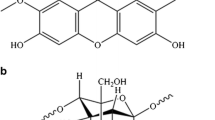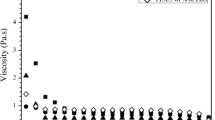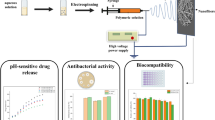Abstract
Eelectrospun fibrous mats for oral ulcer dressing should be able to attach oral mucosa in a high moisture environment and provide desirable therapeutic effects. Ethylcellulose and Gliadin are appropriate polymers in this regard. In the current study, first, Triamcinolone was integrated into Gliadin/Ethylcellulose fibrous mats (Triamcinolone/Gliadin/Ethylcellulose). Then, the chemical structure, thermal stability, mechanical properties, and morphology of Triamcinolone/Gliadin/Ethylcellulose fibrous mats were evaluated by Fourier Transform Infrared Spectroscopy, thermal gravimetric analysis (TGA), Tensile stress analysis, and scanning electron microscopy, respectively. Moreover, the biocompatibility, anti-inflammatory, and antioxidative effects of these fibrous mats were evaluated on human gingival fibroblasts. The results of SEM confirmed the uniform structure of the fabricated fibrous mats. The mechanical strength and the thermal stability of fibrous mats containing Triamcinolone were improved compared with Gliadin/Ethylcellulose fibrous mats. In vitro analysis showed the non-cytotoxicity of these fibrous mats on HGFs. Moreover, expression levels of TNF α and IL 6 in fabricated mats were 0.995 pg/mL and 0.44 pg/mL, which were significantly less than the control group. Also, the measurement of ROS activity showed significant decreases in stimulated HGFs. According to these results, it seems that the Triamcinolone/Gliadin/Ethylcellulose would be a practical mat for application in the treatment of oral inflammatory ulcers.










Similar content being viewed by others
References
Halim DS, Pohchi A, Yi PE (2010) The prevalence of fibroma in oral mucosa among patient attending USM dental clinic year 2006–2010. Ind J Dental Res 1:61. https://doi.org/10.22146/theindjdentres.9991
Epstein JB, Villines D, Drahos G, et al (2008) Oral lesions in patients participating in an oral examination screening week at an urban dental school. J Am Dental Assoc 139:1338–1344. https://doi.org/10.14219/jada.archive.2008.0045
Vaillant L, Samimi M (2016) Aphtes et ulcérations buccales. Presse Medicale 45:215–226. https://doi.org/10.1016/j.lpm.2016.01.005
Akintoye SO, Greenberg MS (2014) Recurrent aphthous stomatitis. Dent Clin North Am 58:281–297. https://doi.org/10.1016/j.cden.2013.12.002
Mortazavi H, Safi Y, Baharvand M, Rahmani S (2016) Diagnostic features of common oral ulcerative lesions: an updated decision tree. Int J Dentistry. https://doi.org/10.1155/2016/7278925
Scully C, Mignogna M (2008) Oral mucosal disease: pemphigus. Brit J Oral Maxillofacial Surg 46:272–277. https://doi.org/10.1016/j.bjoms.2007.07.205
Jacob S, Nair AB, Boddu SHS et al (2021) An updated overview of the emerging role of patch and film-based buccal delivery systems. Pharmaceutics. https://doi.org/10.3390/pharmaceutics13081206
Armenta-rojas E, López-maldonado A (2021) Nystatin-loaded polyelectrolyte complex films as a mucoadhesive drug delivery system for potential buccal application. Biointerf Res Appl Chem 12:4384–4398. https://doi.org/10.33263/briac124.43844398
Chowdary KPR, Srinivas L (2000) Mucoadhesive drug delivery systems: a review of current status. Indian Drugs 37:400–406
Chen YC, Gad SF, Chobisa D et al (2021) Local drug delivery systems for inflammatory diseases: status quo, challenges, and opportunities. J Control Release 330:438–460. https://doi.org/10.1016/j.jconrel.2020.12.025
Anand R, Kumar A (2021) Significant biopolymers and their applications in buccal mediated drug delivery. J Biomater Sci Poly Edition 32:1203–1218. https://doi.org/10.1080/09205063.2021.1902175
Pourshahidi S, Sheykhbahaei N (2021) Effectiveness of herbal based medications in treatment of oral lichen planus: a review article. J Herbal Med 29:100458. https://doi.org/10.1016/j.hermed.2021.100458
Thongprasom K, Dhanuthai K (2008) Steriods in the treatment of lichen planus: a review. Journal of oral science 50:377–385
Mukhopadhyay R, Gain S, Verma S et al (2018) Polymers in designing the mucoadhesive films: a comprehensive review. Int J Green Pharm 12:S330–S344
Akrami-Hasan-Kohal M, Tayebi L, Ghorbani M (2020) Curcumin-loaded naturally-based nanofibers as active wound dressing mats: morphology, drug release, cell proliferation, and cell adhesion studies. New J Chem 44:10343–10351
Laffleur F (2014) Mucoadhesive polymers for buccal drug delivery. Drug Dev Indust Pharm 40:591–598
(2013) Design and development of mucoadhesive buccal tablets of. 4:1186–1196
Sampath Udeni Gunathilake TM, Ching YC, Chuah CH et al (2020) Recent advances in celluloses and their hybrids for stimuli-responsive drug delivery. Int J Biol Macromol 158:670–688. https://doi.org/10.1016/j.ijbiomac.2020.05.010
Hajjari MM, Golmakani MT, Sharif N (2021) Fabrication and characterization of cuminaldehyde-loaded electrospun gliadin fiber mats. Lwt 145:111373. https://doi.org/10.1016/j.lwt.2021.111373
Liu X, Shao W, Luo M et al (2018) Electrospun blank nanocoating for improved sustained release profiles from medicated gliadin nanofibers. Nanomaterials 8:184
Cazorla-Luna R, Notario-Pérez F, Martín-Illana A et al (2020) Development and in vitro/ ex vivo characterization of vaginal mucoadhesive bilayer films based on ethylcellulose and biopolymers for vaginal sustained release of tenofovir. Biomacromolecules 21:2309–2319. https://doi.org/10.1021/acs.biomac.0c00249
Ahmadian S, Ghorbani M, Mahmoodzadeh F (2020) Silver sulfadiazine-loaded electrospun ethyl cellulose/polylactic acid/collagen nanofibrous mats with antibacterial properties for wound healing. Int J Biol Macromol 162:1555–1565
Murtaza G (2012) Ethylcellulose microparticles: a review. Acta Pol Pharm 69:11–22
Mansourian A, Saheb-Jamee M, Momen-Beitollahi J et al (2011) Comparison of aloe vera mouthwash with triamcinolone acetonide 0.1% on oral lichen planus: a randomized double-blinded clinical trial. Am J Med Sci 342:447–451
Fani MM, Ebrahimi H, Pourshahidi S et al (2012) Comparing the effect of phenytoin syrup and triamcinolone acetonide ointment on aphthous ulcers in patients with Behcet’s syndrome. Iran Red Cresc Med J 14:75
Suen WLL, Chau Y (2013) Specific uptake of folate-decorated triamcinolone-encapsulating nanoparticles by retinal pigment epithelium cells enhances and prolongs antiangiogenic activity. J Control Release 167:21–28. https://doi.org/10.1016/j.jconrel.2013.01.004
Aquino GDA, Stopilha; Pedrosa;, et al (2011) Validation of quantitative analysis method for triamcinolone in ternary complexes by UV-Vis spectrophotometry. J Basic Appl Pharmaceutical Sci Rev Ciênc Farm Básica Apl 32:35–40
Sabzichi M, Mohammadian J, Ghorbani M et al (2017) Fabrication of all-trans-retinoic acid-loaded biocompatible precirol: A strategy for escaping dose-dependent side effects of doxorubicin. Colloids Surf B Biointerf 159:620–628
Ghorbani M, Hamishehkar H, Hajipour H et al (2016) Ternary-responsive magnetic nanocarriers for targeted delivery of thiol-containing anticancer drugs. New J Chem 40:3561–3570. https://doi.org/10.1039/C5NJ03602J
Maroufi NF, Vahedian V, Mazrakhondi SAM et al (2020) Sensitization of MDA-MBA231 breast cancer cell to docetaxel by myricetin loaded into biocompatible lipid nanoparticles via sub-G1 cell cycle arrest mechanism. Naunyn-Schmiedeberg’s Arch Pharmacol 393:1–11
Ghorbani M, Hamishehkar H, Arsalani N, Entezami AA (2016) Surface decoration of magnetic nanoparticles with folate-conjugated poly(N-isopropylacrylamide-co-itaconic acid): a facial synthesis of dual-responsive nanocarrier for targeted delivery of doxorubicin. Int J Polym Mater Polym Biomater 65:683–694. https://doi.org/10.1080/00914037.2016.1157800
Raeisi S, Chavoshi H, Mohammadi M et al (2019) Naringenin-loaded nano-structured lipid carrier fortifies oxaliplatin-dependent apoptosis in HT-29 cell line. Process Biochemistry 83:168–175. https://doi.org/10.1016/j.procbio.2019.05.013
Cheng L, Wang Y, Sun G, et al (2020) Hydration-enhanced lubricating electrospun nanofibrous membranes prevent Tissue Adhesion Rese 2020:4907185. https://doi.org/10.34133/2020/4907185
Ghorbani M, Nezhad-Mokhtari P, Ramazani S (2020) Aloe vera-loaded nanofibrous scaffold based on Zein/Polycaprolactone/Collagen for wound healing. Int J Biol Macromol 153:921–930
Bodbodak S, Shahabi N, Mohammadi M, et al (2021) Development of a novel antimicrobial electrospun nanofiber based on polylactic acid/hydroxypropyl methylcellulose containing pomegranate peel extract for active food packaging. Food Bioprocess Technol 1–13
Varghese JS, Chellappa N, Fathima NN (2014) Gelatin–carrageenan hydrogels: role of pore size distribution on drug delivery process. Colloids Surf B Biointerf 113:346–351
Remuñán-López C, Portero A, Vila-Jato JL, Alonso MJ (1998) Design and evaluation of chitosan/ethylcellulose mucoadhesive bilayered devices for buccal drug delivery. J Control Release 55:143–152
Akhavan-Kharazian N, Izadi-Vasafi H (2019) Preparation and characterization of chitosan/gelatin/nanocrystalline cellulose/calcium peroxide films for potential wound dressing applications. Int J Biol Macromol 133:881–891
Bölgen N, Menceloğlu YZ, Acatay K et al (2005) In vitro and in vivo degradation of non-woven materials made of poly (ε-caprolactone) nanofibers prepared by electrospinning under different conditions. J Biomater Sci Polym Edition 16:1537–1555
Ghorbani M, Nezhad-Mokhtari P, Ramazani S (2020) Aloe vera-loaded nanofibrous scaffold based on Zein/Polycaprolactone/Collagen for wound healing. Int J Biol Macromol
Gurny R, Meyer JM, Peppas NA (1984) Bioadhesive intraoral release systems: design, testing and analysis. Biomaterials 5:336–340. https://doi.org/10.1016/0142-9612(84)90031-0
Laffleur F, Krouská J, Tkacz J et al (2018) Buccal adhesive films with moisturizer-the next level for dry mouth syndrome? Int J Pharm 550:309–315
Yavari Maroufi L, Ghorbani M, Mohammadi M, Pezeshki A (2021) Improvement of the physico-mechanical properties of antibacterial electrospun poly lactic acid nanofibers by incorporation of guar gum and thyme essential oil. Colloids Surf A Physicochem Eng Aspects. https://doi.org/10.1016/j.colsurfa.2021.126659
Ghorbani M, Mahmoodzadeh F, Yavari Maroufi L, Nezhad-Mokhtari P (2020) Electrospun tetracycline hydrochloride loaded zein/gum tragacanth/poly lactic acid nanofibers for biomedical application. Int J Biol Macromol 165:1312–1322. https://doi.org/10.1016/j.ijbiomac.2020.09.225
Chen H, Sun S, Li J et al (2013) Different intravitreal properties of three triamcinolone formulations and their possible impact on retina practice. Invest Ophthalmol Visual Sci 54:2178–2185. https://doi.org/10.1167/iovs.12-11460
Shaikh S, Ho S, Engelmann LA, Klemann SW (2006) Cell viability effects of triamcinolone acetonide and preservative vehicle formulations. Brit J Ophthalmol 90:233–236. https://doi.org/10.1136/bjo.2005.076190
A Al-Sandooq T, M Al-Waiz M, A Kashmoola M, Salman H (2008) Differences between low level laser therapy and triamcinolone acetonide kenalog on healing of recurrent aphthous ulceration. Ann College Med Mosul 34:35–41
Su Z, Hu J, Cheng B, Tao X (2021) Efficacy and safety of topical administration of tacrolimus in oral lichen planus: an updated systematic review and meta-analysis of randomized controlled trials. J Oral Pathol Med. https://doi.org/10.1111/jop.13217
Kadir AKMS, Islam AHMM, Ruhan M, et al (2020) Recurrent aphthous stomatitis: an overview. Int J Oral Health Dentistry 4:6–11. https://doi.org/10.18231/2395-499x.2018.0002
Shahi Y, Samadi FM, Mukherjee S (2020) Plasma lipid peroxidation and antioxidant status in patients with oral precancerous lesions and oral cancer. Oral Sci Int 17:86–93. https://doi.org/10.1002/osi2.1050
Curra M, Martins MAT, Lauxen IS et al (2013) Effect of topical chamomile on immunohistochemical levels of IL-1β and TNF-α in 5-fluorouracil-induced oral mucositis in hamsters. Cancer Chemother Pharmacol 71:293–299
Guimarães ALS, de Fátima Correia-Silva J, de Sa AR et al (2007) Investigation of functional gene polymorphisms IL-1β, IL-6, IL-10 and TNF-α in individuals with recurrent aphthous stomatitis. Arch Oral Biol 52:268–272
Gould SA, White M, Wilbrey AL et al (2021) Protection against oxaliplatin-induced mechanical and thermal hypersensitivity in Sarm1−/− mice. Exp Neurol. https://doi.org/10.1016/j.expneurol.2021.113607
Alipour M, Pouya B, Aghazadeh Z et al (2021) The Antimicrobial, antioxidative, and anti-inflammatory effects of polycaprolactone/gelatin scaffolds containing chrysin for regenerative endodontic purposes. Stem Cells Int 2021:1–11. https://doi.org/10.1155/2021/3828777
Alipour M, Fadakar S, Aghazadeh M et al (2021) Synthesis, characterization, and evaluation of curcumin-loaded endodontic reparative material. J Biochem Mol Toxicol. https://doi.org/10.1002/jbt.22854
Yuniati R, Munita FF, Dayana B, Amalia F (2018) Difference of tumor necrosis factor (TNF-α) levels in multibacillary leprosy between reversal reaction and non-reversal reaction patients. Pakistan J Med Health Sci 12:1381–1383
Ziaudeen S, Ravindran R (2017) Assessment of oxidant-antioxidant status and stress factor in recurrent aphthous stomatitis patients: Case control study. J Clin Diagnostic Res 11:ZC01–ZC04. https://doi.org/10.7860/JCDR/2017/22894.9348
Babaee N, Mansourian A, Momen-Heravi F et al (2010) The efficacy of a paste containing Myrtus communis (Myrtle) in the management of recurrent aphthous stomatitis: a randomized controlled trial. Clinical Oral Investigations 14:65–70
Acknowledgements
The authors would like to thank the “Stem Cell Research Center, Tabriz University of Medical Sciences” and “Sara Research Laboratory” for their kindly cooperation.
Author information
Authors and Affiliations
Corresponding authors
Ethics declarations
Conflict of Interest
There are no conflicts to declare.
Ethical Approval
The study procedure was approved by the Ethical Committee of Tabriz University of Medical Science (Approval ID: 66362).
Additional information
Publisher's Note
Springer Nature remains neutral with regard to jurisdictional claims in published maps and institutional affiliations.
Rights and permissions
About this article
Cite this article
Alipour, M., Aghazadeh, M., Ramezani, S. et al. Fabrication of a Novel Fibrous Mat Based on Gliadin/Ethylcellulose Incorporated with Triamcinolone for Treatment of Oral Ulcers. J Polym Environ 30, 2579–2588 (2022). https://doi.org/10.1007/s10924-021-02365-2
Accepted:
Published:
Issue Date:
DOI: https://doi.org/10.1007/s10924-021-02365-2




